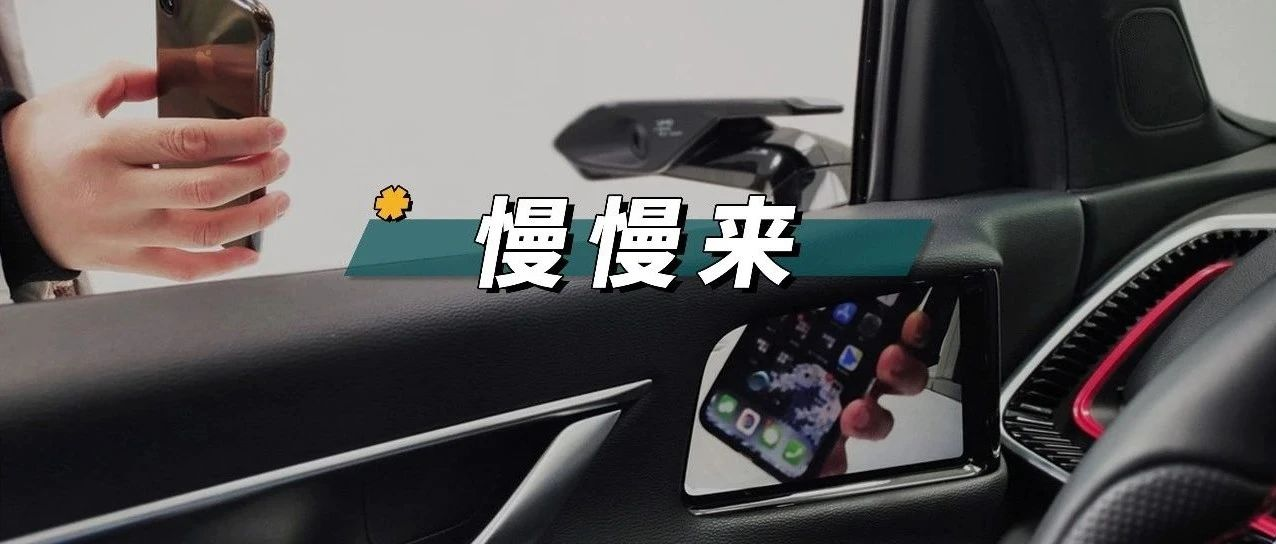Author: I Chris Zheng
On January 4th, Lotus announced that its pure electric SUV Eletre would become one of the first models in China to support the installation of streaming media external rearview mirrors.
Combining the three major advantages of streaming media external rearview mirrors listed on Lotus’s optional page compared to traditional external rearview mirrors, as well as the optional price of up to RMB 16,000, I initially established a mental preset that the comprehensive experience of streaming media external rearview mirrors would be superior to traditional external rearview mirrors, and once approved by regulations, this substitution would be the trend.
Based on the fierce internal competition in the Chinese market in 2022, such as the air suspension and 7.1.4 Dolby audio system, I posted this prediction on Weibo: By 2025, streaming media external rearview mirrors will also become popular in the high-end automotive market like the above-mentioned products.
However, Weibo user Li Xiang left a more cautious suggestion in the comments section: We should investigate the actual feelings of Audi and Lexus users and then draw conclusions.
The so-called “No investigation, no right to speak” is a good suggestion, so I decided to investigate streaming media external rearview mirrors in depth.
As of now, mass-produced passenger cars that support optional streaming media external rearview mirrors, in addition to Audi (e-tron series), Lexus (ES series) mentioned by Li Xiang, include Honda e and Hyundai Ioniq series models. Unless otherwise specified, the following information comes from relevant brand official websites, media test drives, and user forum feedback.
What are the advantages of streaming media external rearview mirror?
The reasons given by the above brands are similar.
First, reduce wind resistance.
 Taking the Audi e-tron as an example, selecting the optional virtual exterior mirrors instead of traditional ones can reduce the vehicle drag coefficient from 0.28 to 0.27, decrease the vehicle width by 15 centimeters, and greatly reduce wind noise. Under the European WLTP test cycle, the e-tron equipped with this option can increase the range by about 35 km.
Taking the Audi e-tron as an example, selecting the optional virtual exterior mirrors instead of traditional ones can reduce the vehicle drag coefficient from 0.28 to 0.27, decrease the vehicle width by 15 centimeters, and greatly reduce wind noise. Under the European WLTP test cycle, the e-tron equipped with this option can increase the range by about 35 km.

Is 35 km achieved under WLTP test cycle good? Audi engineers suggest that, if it is achieved through weight reduction, then the curb weight of the e-tron must be reduced by half a ton or 500 kg.
Hyundai also pointed out that the virtual exterior mirrors reduced the air resistance of the Ioniq 5 by 2.8%.
Honda made a similar statement on its Honda e introduction page: selecting the virtual exterior mirrors can reduce the air resistance of the side mirrors by 90%, improve the vehicle by 3.8%, and thereby improve its aerodynamics.
Secondly, it can improve blind spot visibility. All the above-mentioned brands mentioned this point, that cameras have a wider viewing angle than traditional external rearview mirrors. According to Hyundai, the virtual exterior mirrors have a field of view of 29 degrees compared to the 18 degrees of traditional mirrors.
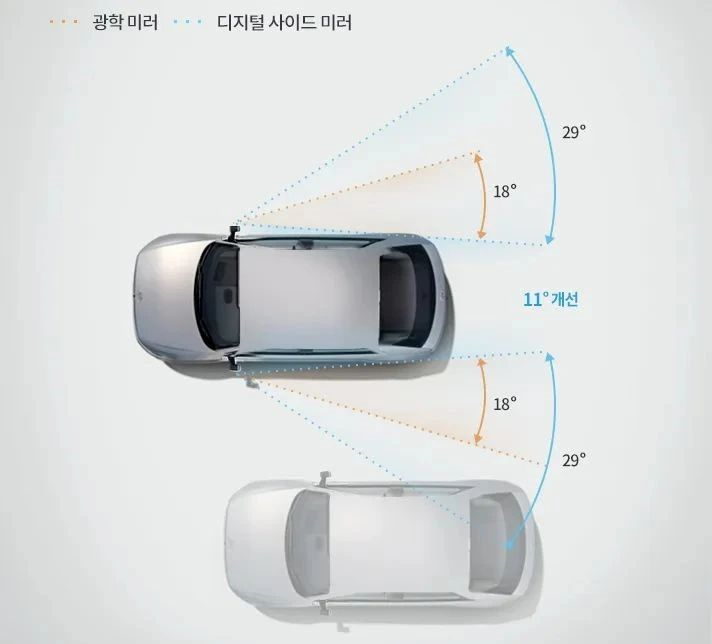
Lexus also stated that cameras can provide enhanced rear and close-up visibility in all driving conditions, eliminating or reducing blind spots for drivers.
Thirdly, it can improve safety through active safety algorithms. All brands’ virtual exterior mirrors are equipped with independent chips for additional image processing, which better supports the driver’s driving operations. For example, the e-tron’s virtual exterior mirrors will automatically adjust the camera’s field of view, moderately magnifying other vehicles or increasing the same side field of view, to help the driver better perceive the road conditions in scenarios such as when driving at speeds above 90 km/h, turning or changing lanes, and parking.The modern approach combines streaming media rearview mirrors with blind spot collision warnings, lane change assists, and other features to enhance driving convenience.

Fourth, provide better visibility in extreme weather or low-light conditions.
Lotus mentioned that the Eletre streaming media rearview mirror camera uses a water-repellent material and is equipped with a heating device to avoid snow covering and is not affected by rain. In addition, Lotus uses image algorithms to make the streaming media rearview mirror have a clearer and brighter vision in dark lighting conditions at night.
Modern practices are similar, maximizing the difference between light and dark parts of the image by applying HDR, making the distance and brightness in the rearview mirror image clearer.
Of course, these four advantages are part of the self-promotion of auto manufacturers. After we have a basic understanding of streaming media rearview mirrors, let’s move on to the user feedback section that Li Xiang mentioned.
What are the shortcomings of streaming media rearview mirrors?
▎Before discussing the issue, let me first express my personal opinion: we should not attribute the difficulty of personal adaptation to emerging technologies to the technology itself. That is to say, if a problem with streaming media rearview mirrors can be resolved gradually by learning to adapt, it should not be considered a problem. Similar learning costs are necessary.
Let’s get into the topic.
First, the reliability of streaming media rearview mirrors is poor.
A survey on the Audi e-tron forum called “Did you encounter visibility problems caused by condensed water mist when using the Audi streaming media rearview mirror?” showed that 17 out of 19 voting users encountered the problem. Comments indicate that this is not an isolated problem.
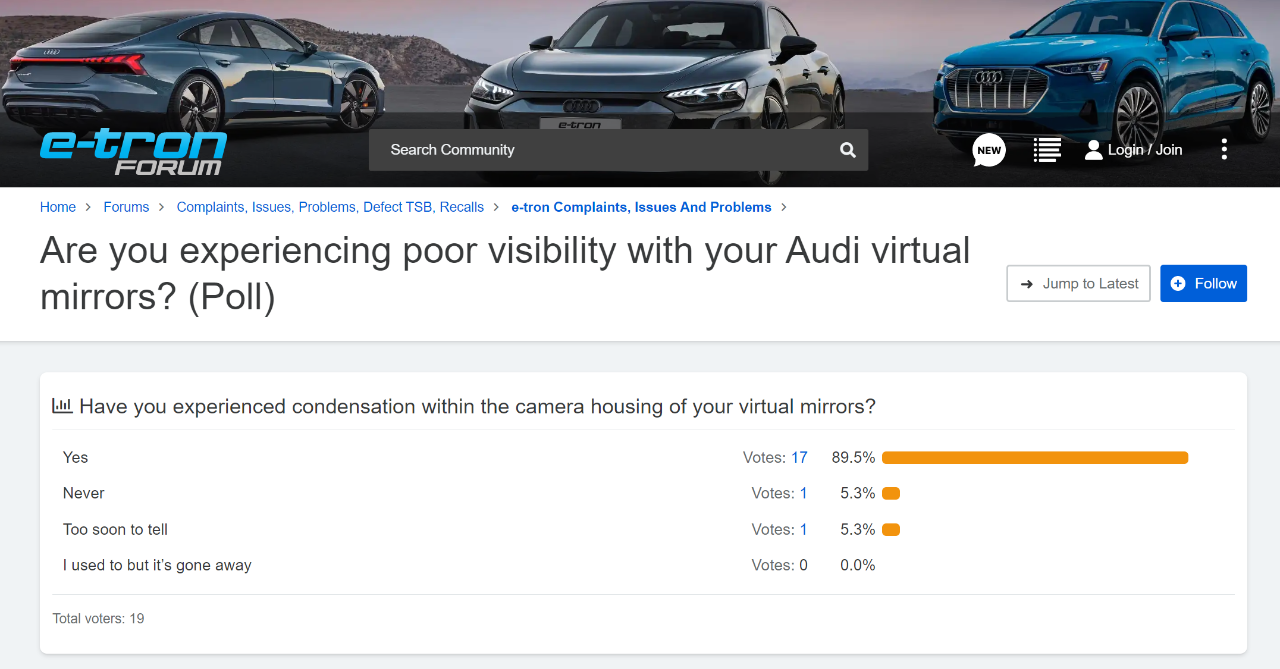
Considering the importance of rearview mirrors in driving, such problems are unacceptable.
But the more serious problem may be that multiple e-tron users have feedback that replacing the external rearview mirror module does not seem to solve the problem. In the low temperature of winter mornings, the problem of external rearview mirrors becoming unusable due to condensed water mist always occurs. Some users believe that this is a design flaw.
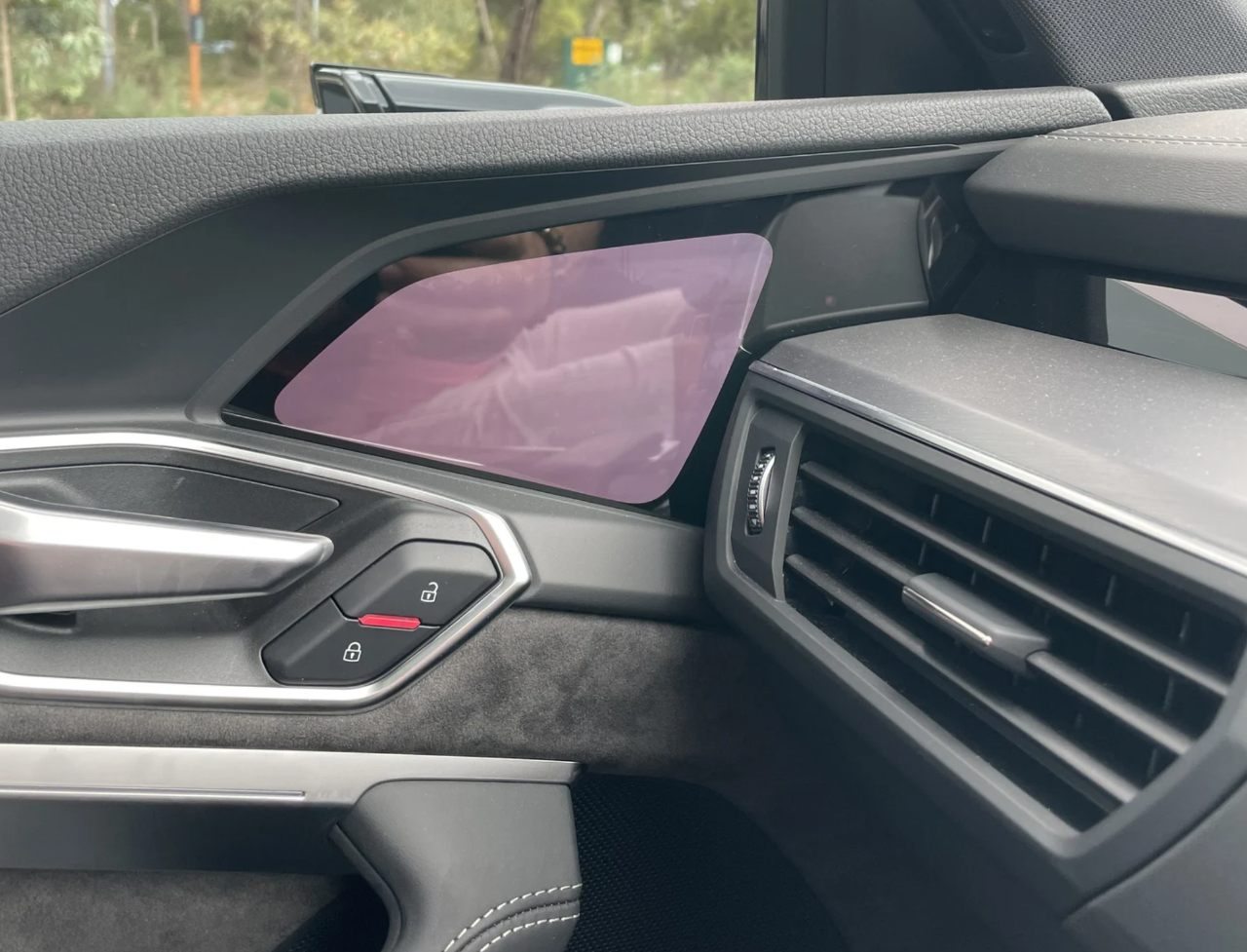
What’s surprising is that the condensed water mist will gradually disappear when the exterior rearview mirror is heated. This feature has led many e-tron users to run blindly for several minutes when the exterior rearview mirror fails, waiting for the mist to evaporate after heating. This has invisibly increased the driving risk of e-tron owners and even other road traffic participants.

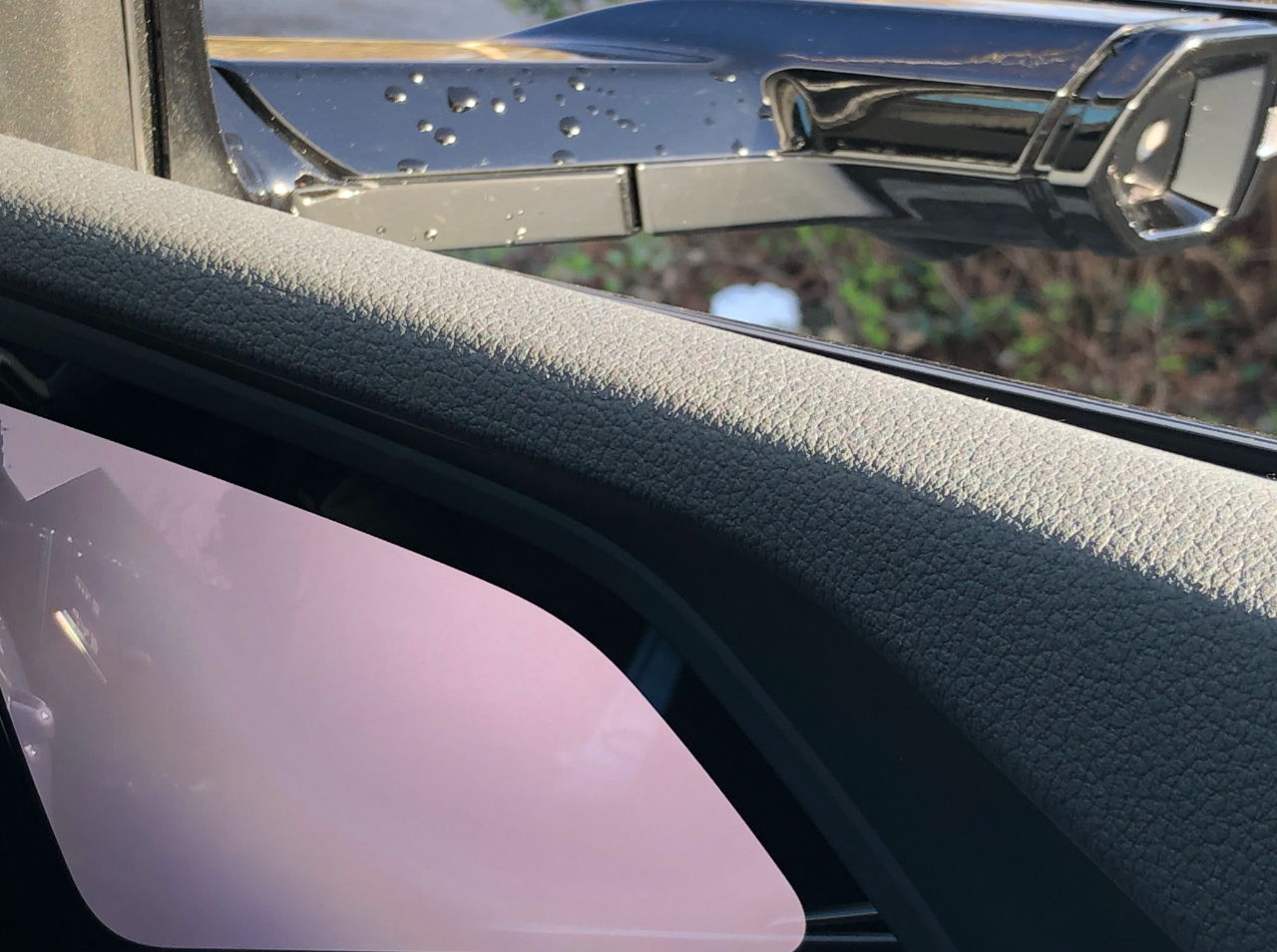
Second, the functional conflict between the streaming media rearview mirror and the interior design aesthetics.
David Linklater, the editor of Stuff, pointed out that the e-tron’s streaming media exterior rearview mirror integrates well with the interior design. However, as a result, the screen is of an irregular shape and is located below the main and co-pilot door panels, lower than traditional exterior rearview mirrors.
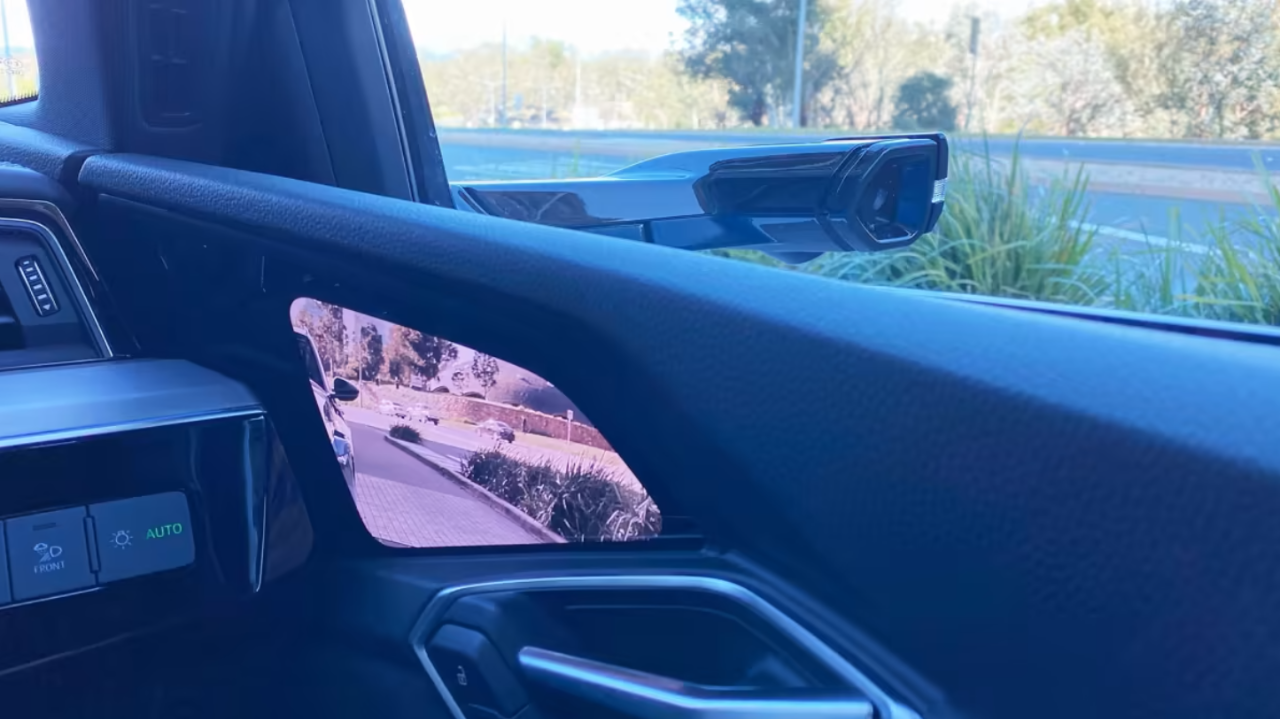
This makes it easy for drivers to see the screen poorly in the morning or evening light, even though the e-tron is equipped with an adaptive ambient light function. The fundamental problem is that the screen faces the opposite car window and there is a reflection problem.
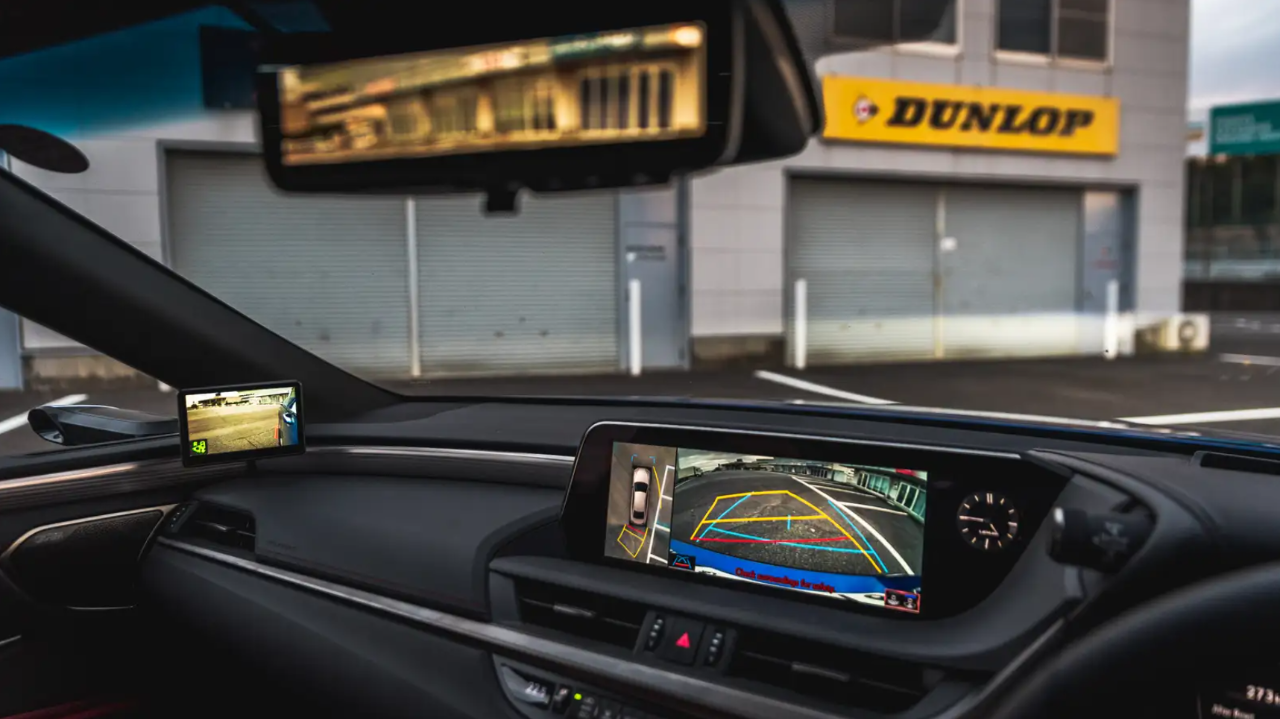 “`
“`
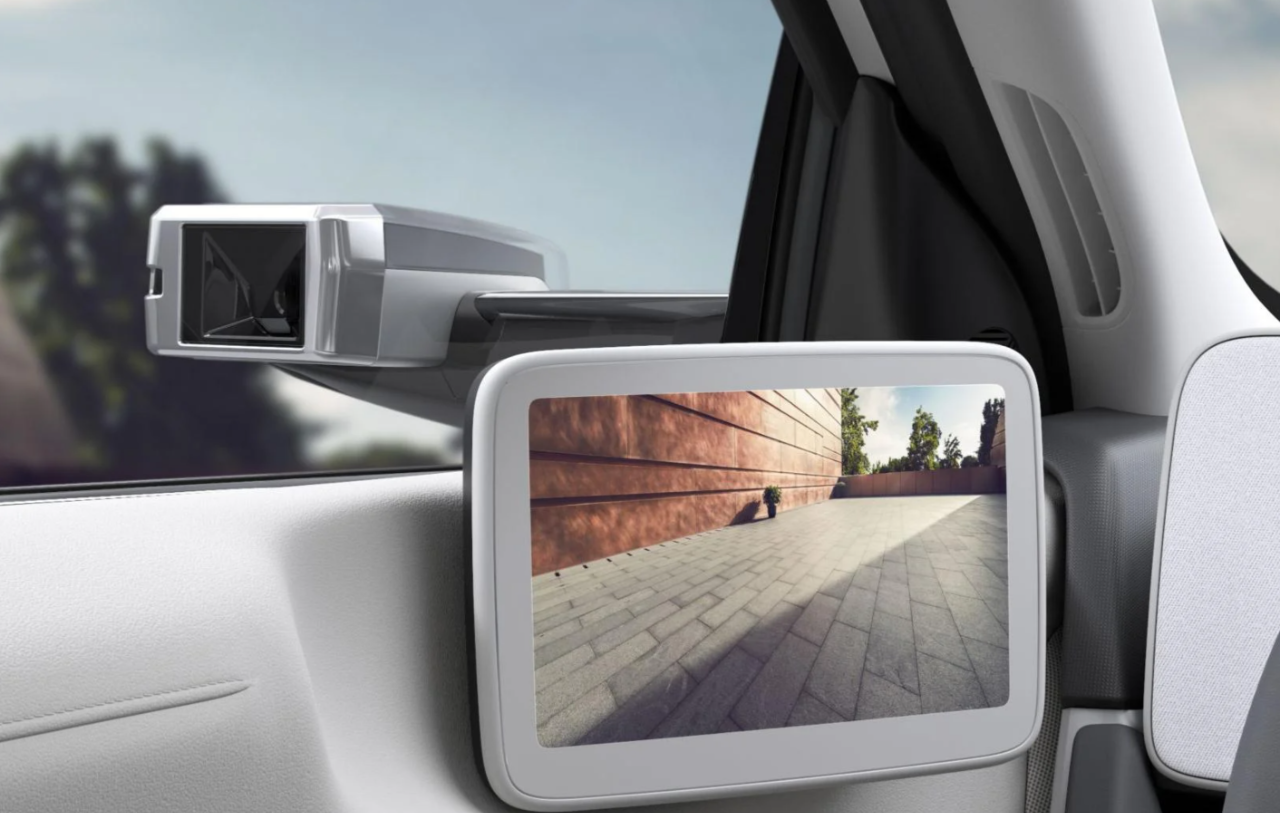
If we take a look at the modern Ioniq 5 and Lexus ES, we can see that these products are designed with better screen positioning, but the new problem is that the streaming external rear-view mirrors of the modern Ioniq 5 and Lexus ES are not deeply integrated with the interior, and they look like makeshift functional components that break the consistency of the interior design.

Apart from Honda e, almost all streaming external rear-view mirrors fail to balance functionality and interior design.
Thirdly, streaming external rear-view mirrors have a learning curve that varies from person to person.
After testing for two months, Carmagazine editor Tim Pollard gave Honda e’s streaming external rear-view mirrors a good review for their stability and low latency, but at the same time pointed out: if you try to observe a certain corner by stretching your neck and adjusting your posture like using traditional rear-view mirrors, you can only see a static video image, which is always a bit strange.
This sentence highlights the interaction differences between traditional and streaming external rear-view mirrors: traditional rear-view mirrors are essentially a mirror, and when the driver is in a blind spot, the field of vision of the traditional rear-view mirror can change in response to the position of the driver’s eyes in space, which is a complete interaction; while the streaming external rear-view mirror is a screen, the field of view is independent of the position of the driver’s eyes, and there is no interaction.

Digging deeper into this problem, we can see that the fundamental problem with streaming external rear-view mirrors is that they will be a disaster for the group of elderly drivers with presbyopia.
Dr. Jay Pratt, a professor of perception and visual cognition at the University of Toronto, explained in detail the fundamental differences between traditional and streaming rear-view mirrors in his exchange with Autopian editor Jason Torchinsky.
This is an optical issue. The essence of a mirror is basically to reflect light from distant objects, plus the distance from the mirror to the human eye. This means that when driving a car, everything the driver sees is in the distance when switching between looking ahead and looking at the rearview mirror.
The essence of streaming media rearview mirrors is to capture images of distant objects, process them and present them on a screen relatively closer to the human eye, meaning that the image seen is closer.
Traditional rearview mirrors do not need to be refocused, while streaming media mirrors almost always need to be refocused.
Streaming media mirrors are like another dashboard, which means the driver needs to refocus constantly during the entire driving process. The problem with this is that the driver needs to spend more time confirming the speed of other vehicles in the rearview mirror and the appropriate time to change lanes. For a driver with an active driving style, this is a backward experience.
For presbyopia users with bifocal glasses for far and near vision, frequent focusing adjustments during the driving process can be frustrating.
Conclusion
OK, it’s time to come to a conclusion. Will streaming media rearview mirrors take over the automotive industry in 2025?
I think this question can be divided into three points: firstly, streaming media rearview mirrors do solve some old problems of traditional rearview mirrors, specifically in terms of their larger field of view, higher definition, and stronger ability to resist extreme environments and lighting.
But at the same time, just like tires, car bodies, and other components, as the most frequently used component in driving, the all-weather reliability of rearview mirrors determines that the difficulty of replacing traditional rearview mirrors with new technologies is extremely high.
Although with the advancement of technology, it is foreseeable that the experience of streaming media rearview mirrors will also have a huge space for improvement, for some users (such as presbyopia users with bifocal glasses mentioned earlier Autopian editor Jason Torchinsky), streaming media rearview mirrors may never be a better option.
Finally, as an emerging technology, the reliability and design standards of streaming media rearview mirrors still have enormous room for improvement. If you use the classic technology application lifecycle in “Crossing the Chasm” to divide it, the current users of streaming media rearview mirrors are still in the earliest innovator group.
For mainstream users, considering the long cycle characteristics of the automotive industry, it’s also difficult to say that 2025, two years from now, is the best time to try streaming media rearview mirrors.
END
This article is a translation by ChatGPT of a Chinese report from 42HOW. If you have any questions about it, please email bd@42how.com.
